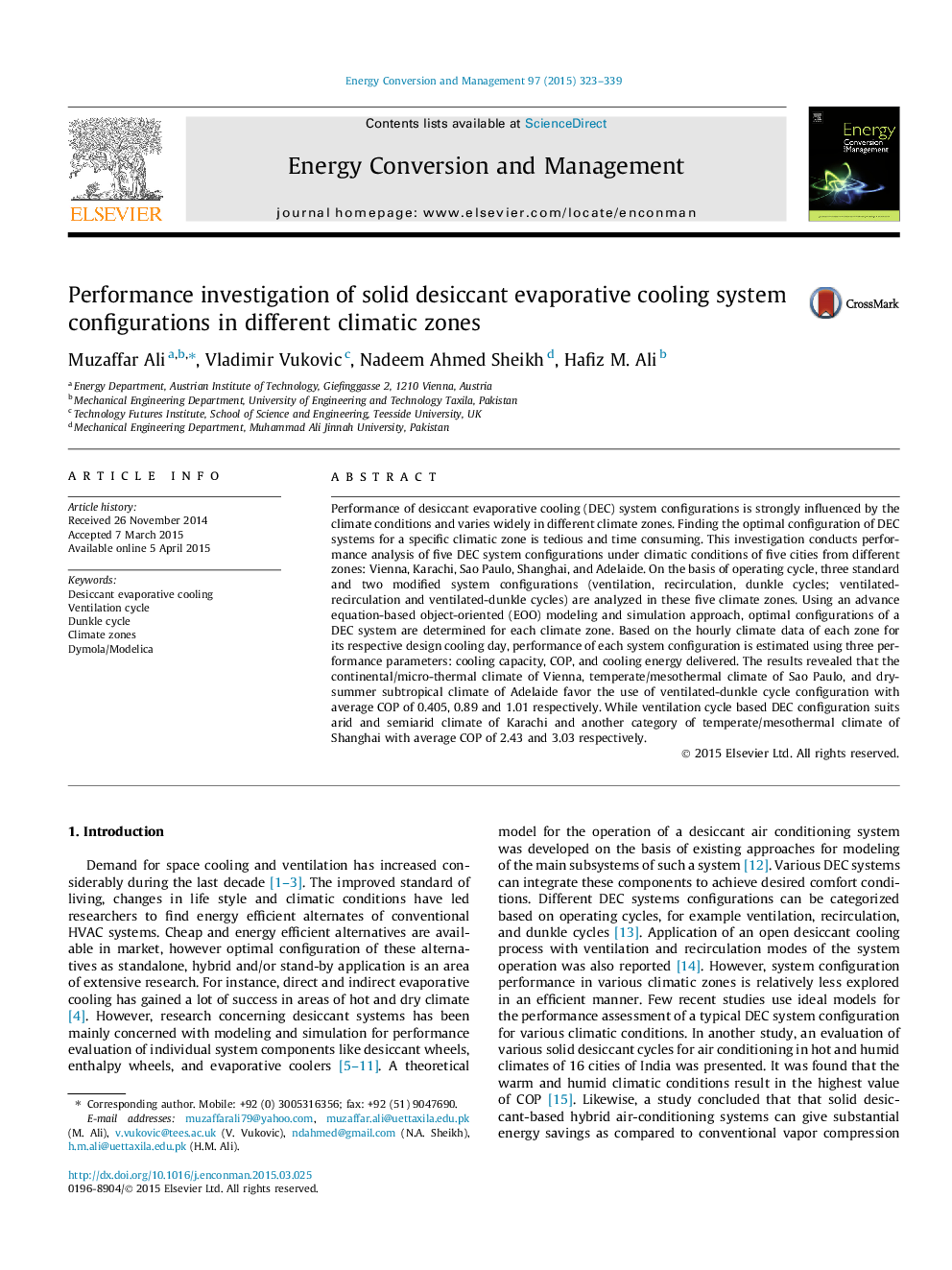| Article ID | Journal | Published Year | Pages | File Type |
|---|---|---|---|---|
| 760593 | Energy Conversion and Management | 2015 | 17 Pages |
•Five configurations of a DEC system are analyzed in five climate zones.•DEC system model configurations are developed in Dymola/Modelica.•Performance analysis predicted a suitable DEC system configuration for each climate zone.•Results show that climate of Vienna, Sao Paulo, and Adelaide favors the ventilated-dunkle cycle.•While ventilation cycle configuration suits the climate of Karachi and Shanghai.
Performance of desiccant evaporative cooling (DEC) system configurations is strongly influenced by the climate conditions and varies widely in different climate zones. Finding the optimal configuration of DEC systems for a specific climatic zone is tedious and time consuming. This investigation conducts performance analysis of five DEC system configurations under climatic conditions of five cities from different zones: Vienna, Karachi, Sao Paulo, Shanghai, and Adelaide. On the basis of operating cycle, three standard and two modified system configurations (ventilation, recirculation, dunkle cycles; ventilated-recirculation and ventilated-dunkle cycles) are analyzed in these five climate zones. Using an advance equation-based object-oriented (EOO) modeling and simulation approach, optimal configurations of a DEC system are determined for each climate zone. Based on the hourly climate data of each zone for its respective design cooling day, performance of each system configuration is estimated using three performance parameters: cooling capacity, COP, and cooling energy delivered. The results revealed that the continental/micro-thermal climate of Vienna, temperate/mesothermal climate of Sao Paulo, and dry-summer subtropical climate of Adelaide favor the use of ventilated-dunkle cycle configuration with average COP of 0.405, 0.89 and 1.01 respectively. While ventilation cycle based DEC configuration suits arid and semiarid climate of Karachi and another category of temperate/mesothermal climate of Shanghai with average COP of 2.43 and 3.03 respectively.
